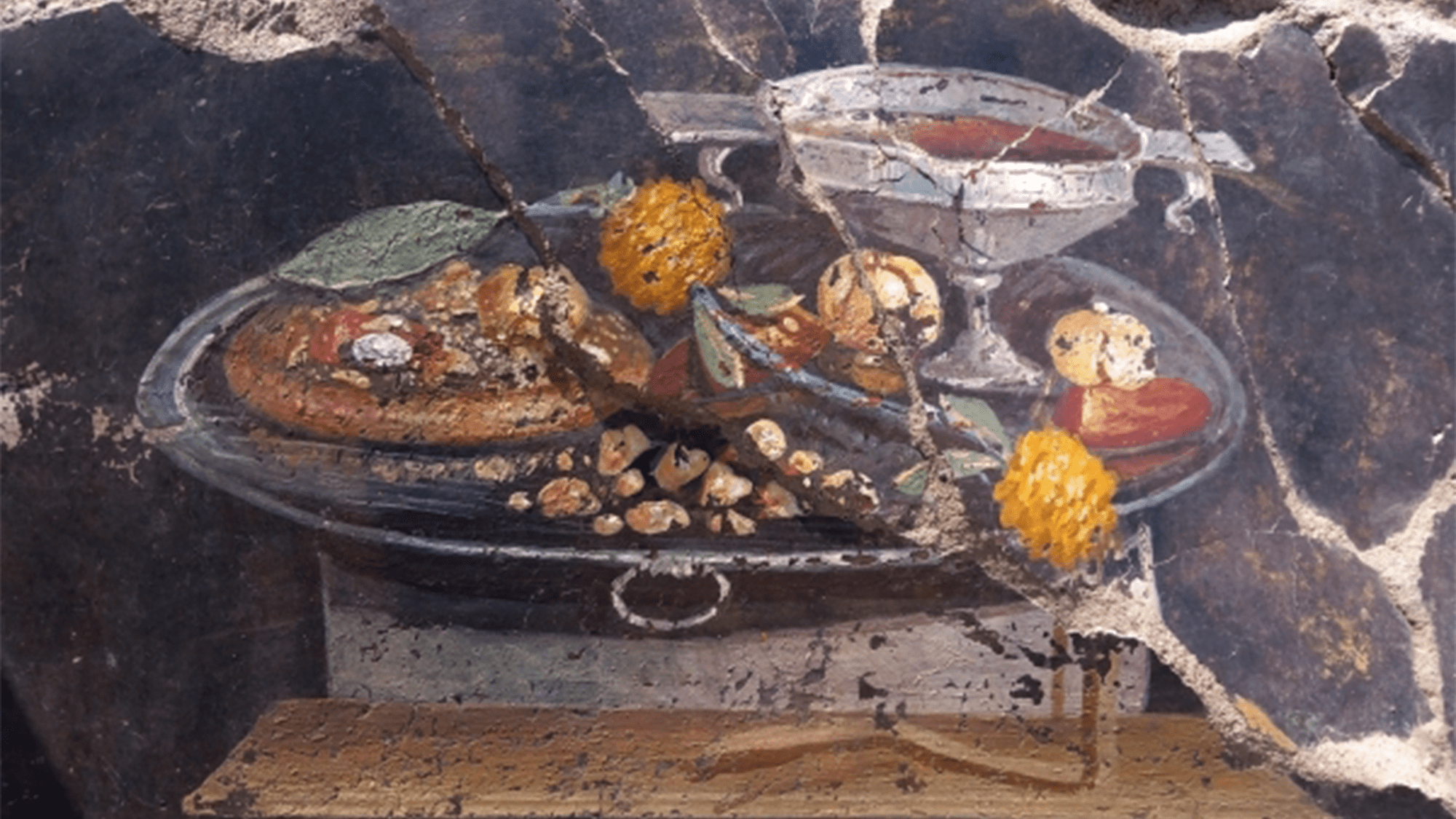

The doomed city of Pompeii is more known for the massive volcanic eruption and earthquakes that destroyed the city in 79 CE than its culinary offerings. However, people in the ancient city near present-day Naples, Italy still ate—and their art offers us a window into what they enjoyed. To the untrained eye, a still-life fresco that was recently uncovered looks like present-day pizza, but the experts at the Pompeii archaeological site say it’s not your usual slice.
[Related: The best way to reheat pizza (and some things you should never do).]
Tomatoes and mozzarella are two of the key ingredients that make up the beloved dish, but sadly they were not available in Italy 2,000 years ago when the fresco was painted. Tomatoes were only introduced to Europe from North and South America in the 1500s. Some historians believe that the discovery of gooey, stretchy mozzarella cheese led directly to the invention of pizza in the 1700s in Naples.
The archeologists believe that the tasty-looking fresco is focaccia covered in fruits, such as pomegranate and possibly dates, and is finished with spices or a type of pesto. The focaccia is served on a silver plate and is paired with wine in a chalice.
The fresco also shows a contrast between what we may see as a frugal meal served dished up on a luxurious on a silvery tray. Pizza has experienced quite a transformation over the years. “[Pizza was] born as a poor-man’s dish in southern Italy, which has won over the world and is served even in starred restaurants,” director of the Pompeii archaeological site Gabriel Zuchtriegel said in a statement.
UNESCO listed the art of making Neapolitan pizza, or Pizzaiuolo, on its cultural heritage list in 2017, recognizing its four phases of dough preparation and for being baked exclusively in a wood oven at 905 degrees Fahrenheit. These days, pizza represents about one-third of the food budget of foreign visitors to Italy and generates roughly $16.4 billion in revenue for the country.
The fresco was uncovered during new excavations in a central location of Pompeii called Regio IX. The painting was on the remains of a wall of an ancient Pompeian house. This house was connected to a bakery that was partially explored between 1888 and 1891 and researchers reopened investigations into the house last January.
[Related: ‘Violent’ earthquakes accompanied the infamous volcanic eruption that buried Pompeii.]
The tasty visual belongs to a genre of images, known as Xenia in antiquity. The pictures took inspiration from the “gifts of hospitality” that were offered to guests based on a Greek tradition from the Hellenistic period (Third to First Centuries BCE). About 300 of these representations have been found in Vesuvian cities.
“Pompeii never ceases to amaze; it is a chest that always reveals new treasures,” Italian Minister of Culture Gennaro Sangiuliano said in a statement. “The conservation and development of the heritage as stated by Article 9 of the Constitution, are an absolute priority.”
Pompeii was destroyed in a cataclysmic volcanic eruption from nearby Mount Vesuvius around 79 CE. The explosion’s sudden and deadly nature preserved most of the ancient Roman city intact and embalmed in volcanic ash. Archaeologists have found the remains of over 1,300 victims in the site over the last 250 years.
